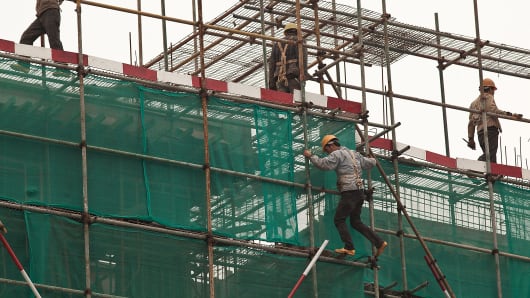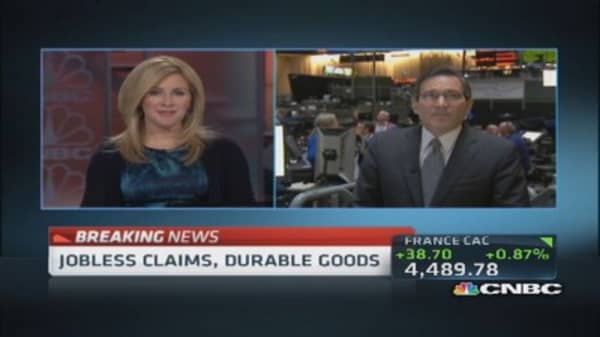Those mixed signals are echoed in reports on growth around the world, as the global economy continues to shake off the aftermath of the financial crisis of 2008 and the Great Recession.
Read More Good news, bad news: Durable goods jump, and so do jobless claims
Much of the concern among investors centers on the historic unwinding of an unprecedented flood of money created by central banks around the world to spur growth. Now, as the era of cheap money comes to a close, some fear that the global economic recovery could be at risk if interest rates rise too quickly, making it more expensive for businesses and consumers to borrow and dampening spending and investment.
"Interest rates have been so low, but that's starting to change," said Nariman Behravesh, chief economist of IHS. "That means companies are going to be facing a tougher earnings environment. It's not to be like last year, and that's what's worrying the stock market."
Most economic forecasters expect the global recovery to remain on track, with growth picking up again later this year. In its latest assessment, the International Monetary Fund said it expects the world economy to expand by 3.6 percent this year—up from 3 percent last year—and continue strengthening to 3.9 percent growth in 2015.
A number of forces will help support that growth: Oil prices appear to be relatively stable, inflation is low in much of the developed world and wages are still rising in the developing world. In the U.S., the headwinds of budget cutting and tax increases are easing.
But the outlook for the cost and availability of credit—the lifeblood of economic growth—is a lot less clear.
Read More US factory activity expands in April, pace stalls
In the U.S., interest rates have risen only modestly and demand for credit remains relatively strong among consumers and businesses, despite the Federal Reserve's ongoing moves to taper off the flow of new money.
Though lenders are still choosy about approving loans, bankers continue to gradually ease up their lending guidelines. Mortgage rates have stabilized after a sharp run-up a year ago. While home price gains are expected to slow this year, the housing recovery is on track in most parts of the country.
The outlook is not as bright in Europe, where growth has stalled out for the past two years. That stagnation has dampened profits for a long list of global companies selling products and services in the euro zone.
After the implosion three years ago of southern European economies, including Greece and Spain, the economy began shrinking, lending demand softened and prices began falling. The problem, say economists, is that European central bankers never opened the money spigots like their American counterparts to repair the damage from the 2008 banking crisis.
"Euroland banking is still broken," said Carl Weinberg, chief economist at High Frequency Economics. "No one can predict economic recovery without convincing evidence of a resumption of credit growth."
European central bankers' reluctance to pump money into the system stemmed largely from persistent German fears of sparking inflation. But that financial discipline has come with a price. Though the German economy is still growing slowly, the euro zone economy overall has been in a mild recession, contracting a half percent last year.
Now, with falling prices in much of Southern Europe threatening to set off a prolonged period of deflation—a downward price spiral that can be very tough to break—German policy makers may be ready to change course, according to IHS' Behravesh.





